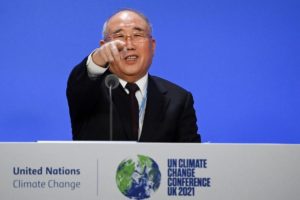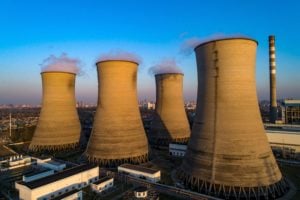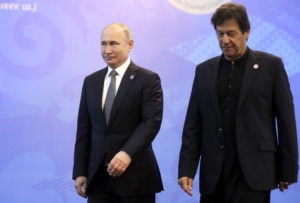China’s national emissions trading scheme (ETS) became operational last year, obliging more than 2,000 big emitters in the power sector to account for their emissions in 2019 and 2020. The current scope of the ETS includes annual emissions close to 4.5 billion tonnes of CO2 per year, or around 40% of China’s total. Unlike similar schemes elsewhere, such as in the European Union, China’s allocation of emissions allowances is not decided upfront via an absolute cap but is based instead on emissions intensity. One allowance means a company can emit 1 tonne of carbon.
So far, activity has been limited: in 2021 the ETS traded a total of 412.05 million tonnes of allowances, including those on regional pilot schemes and the domestic offsets known as CCERs. However, a slow start is not uncommon: in its first year of trading in 2005, the EU ETS saw 321 million allowances transacted, but this had topped 12 billion by 2021.
China’s ETS pilots – most of which have been active since 2013 – continued operations in parallel, but for the most part saw trade volumes drop as power sector emitters turned increasingly to the national ETS.
China Certified Emissions Reductions (CCER) refer to activities by companies to reduce emissions on a voluntary basis, which have been certified by the government. Example activities include renewable power generation, forestry projects and waste-to-energy projects.
The national ETS was announced in 2017 and officially launched in early January 2021 when the Chinese Ministry of Ecology and Environment (MEE) published key ETS policy documents. In July 2021, trading commenced on the platform operated by the Shanghai Environment and Energy Exchange. The year also saw activity on China’s two other major carbon market institutions: first, the Beijing Green Exchange, which is the national trading platform for voluntary carbon credits (VERs) and for domestic offsets (CCERs) that operators covered under the national ETS may use for compliance; and second, the China Hubei Carbon Emissions Exchange, which serves as an interim registry of transactions and holdings until an official national ETS registry is established.
Upbeat results
The carbon emissions allowances closed the year at 54.22 yuan (US$8.52) per tonne, up 13% on the opening price of 16 July. Including both listed and off-exchange trades, the weighted average price of allowances in 2021 was 43.85 yuan ($6.89) per tonne. A total of 179 million tonnes of allowances changed hands over the 114 trading days in 2021. Of these, 148 million tonnes (83%) were over-the-counter (OTC). The following table gives an overview of the market performance of the different kinds of transaction last year.
Carbon emissions allowance trades in the main segments of China’s carbon market, 2021
| Trade volume (million tonnes) | Value (million $) | |
| National ETS | 178.79 | 1,301.23 |
| Regional pilots | 63.58 | 371.05 |
| CCERs | 169.68 | N/A |
| Total | 412.05* | 1,672.83 |
Trades are conducted electronically, and only spot transactions are allowed. No futures or other derivatives are. Transactions are referred to as either listed trades or OTC bulk trades (bilateral OTC trades that cleared on exchange at the end of each session). The latter occur in minimum batches of 100,000 allowances by mutual agreement and a daily price fluctuation limit of 30%. Only covered entities may trade. Financial institutions and other “speculators” are not yet allowed to participate in the market, although the Chinese government has indicated this may change at a later stage.
ETS transactions occurred in two distinct stages, with those taking place during July to September representing a “learning and preparing” phase, and real trading starting from October to mid-December. By the end of September, however, some large state-owned enterprises had completed their company carbon asset management and trading strategies: 30 September saw some large OTC transactions. With covered entities having received their allowances gradually from the Ministry of Ecology and Environment over the course of the year, demand picked up in October to mid-December as operators with a shortage began searching for allowances both on-screen and in block trades. Available supply was limited, as most surplus holders did not want to part with their extra allowances.
China’s regional pilot carbon markets are still running, parallel to the national ETS. Large emitting companies in various sectors other than power generation are still regulated by the respective regional markets, though some captive power plants in Beijing and Guangdong are gradually shifting to the national ETS this year. The pilots’ role will decrease as the national ETS develops and an increasing number of entities shift to it from their regional ETS. As for allowance prices in the pilot systems, those in Beijing continued to be the highest, reaching a record of $9.22 per tonne in 2021 (higher than the national ETS’s $6.42 per tonne), followed by the Shanghai pilot’s high of $6.03.
Outlook for 2022
We estimate final verified emissions for the two-year period of 2020–1 to have been 8.68 billion tonnes, against a known total allocation of 9.01 billion carbon emission allowances. This leaves a surplus of 360 million allowances going forward into the 2022 compliance year. MEE is pondering whether to eliminate that surplus to avoid market imbalance. This point will be clarified in the upcoming 2021–2 allocation plan draft for the power generation industry. Also, the national ETS’s scope will expand in the coming years, with sectors like cement and non-ferrous metals likely being brought in, possibly including their 2022 emissions.
Further ETS-related actions the government will take in 2022 pertain largely to its legal status. A key document to watch out for will be the Interim Regulations for the Management of Carbon Emissions Trading. We expect the average emission allowance price to be above 65 yuan ($10.22) per tonne in 2022 according to the tighter benchmarks and more balanced supply and demand in the market, with better data quality and MRV (monitoring, reporting and verification) measures.
Looking ahead, 2022 will be a year of progress towards China’s dual carbon targets. With a further systematisation and institutionalisation of carbon reduction, the work on carbon peaking and carbon neutrality will be further advanced. Furthermore, the “dual control” of energy consumption and energy intensity may change to the “dual control” of total carbon emissions and carbon intensity, which will have a profound impact on local governments, local economies and enterprises, and accelerate the green transformation of multiple industries.








